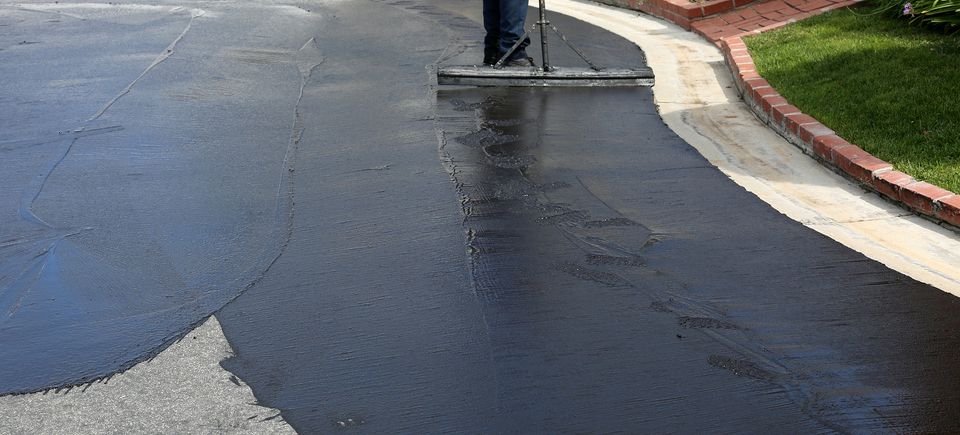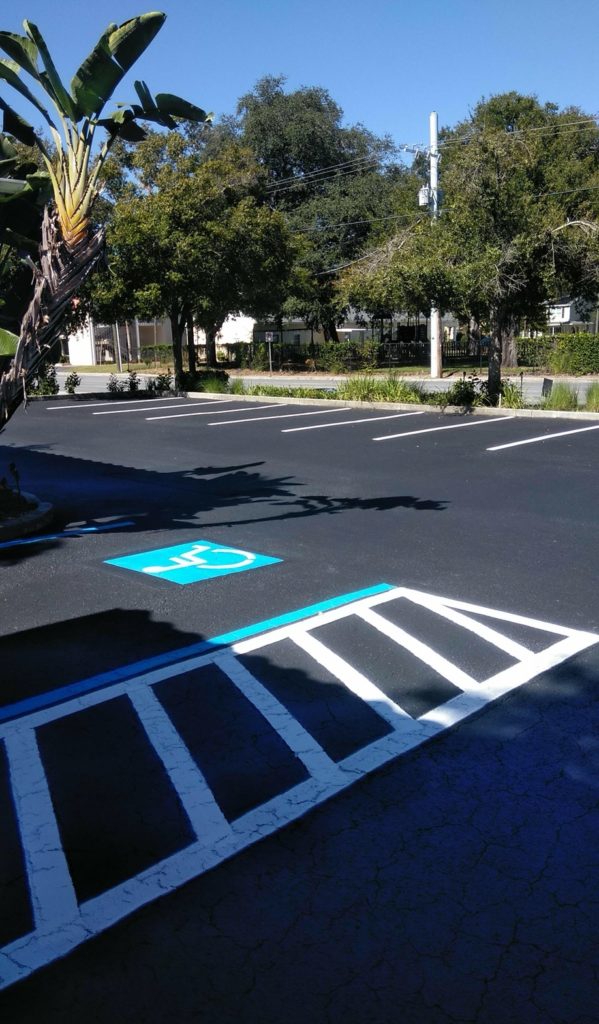Optimize Resilience: Hot Mix Asphalt Sealing for Angled Parking Structures
Optimize Resilience: Hot Mix Asphalt Sealing for Angled Parking Structures
Blog Article
Warm Mix Asphalt: A Lasting Option for Pavement
Warm Mix Asphalt (HMA) has actually become a leading sustainable choice for pavement remedies, providing a myriad of environmental benefits and innovative technologies. Its capability to lower and reuse products energy intake provides an engaging situation for its fostering in road building jobs. Furthermore, the lasting performance and resilience of HMA make it a preferred alternative for facilities advancement. As the need for environment-friendly building methods expands, checking out the subtleties of HMA's sustainability can supply useful insights into the future of sidewalk services.
Ecological Benefits of Warm Mix Asphalt

Furthermore, Warm Mix Asphalt aids to mitigate urban warm island effects. Its dark shade absorbs sunshine, decreasing the quantity of heat showed back right into the ambience compared to lighter-colored pavements. This can decrease ambient temperatures in city locations, reducing the need for air conditioning and eventually minimizing power usage.
In addition, Warm Mix Asphalt adds to improved stormwater management. Its porous nature enables water to penetrate the sidewalk and reenergize groundwater supplies, decreasing overflow and the danger of flooding. These ecological advantages make Warm Mix Asphalt a sustainable option for leading freeways and roadways.
Energy Effectiveness in HMA Manufacturing
Is power effectiveness a critical consider the production of Hot Mix Asphalt (HMA)? Absolutely. Energy plays a considerable function in the production of HMA, impacting both cost and environmental sustainability. One key aspect of power performance in HMA manufacturing is the usage of cozy mix asphalt (WMA) innovations (commercial parking lot paving). WMA permits the blending and positioning of asphalt at reduced temperature levels contrasted to conventional hot mix asphalt, resulting in minimized energy intake throughout production. This process not only lowers gas usage but also decreases greenhouse gas exhausts, making it a much more eco-friendly option.
Moreover, improvements in plant innovations have actually brought about more energy-efficient HMA production procedures. Modern plants are created with features like recycled asphalt sidewalk (RAP) processing abilities, efficient heater systems, and improved insulation, all adding to energy financial savings. By maximizing energy use in HMA production, the sector can lower its carbon footprint while keeping top notch sidewalk materials. Energy effectiveness is, consequently, an important factor to consider in making sure the sustainability of Warm Mix Asphalt manufacturing.
Recyclability of Hot Mix Asphalt
The recyclability of Hot Mix Asphalt (HMA) is a crucial aspect of its sustainability and long-term environmental effect. HMA is just one of one of the most recycled products in the USA, with over 100 million lots of redeemed asphalt sidewalk (RAP) being reused yearly in new pavement building. Reusing HMA provides several environmental benefits, such as reducing the demand for virgin products, lowering power intake throughout manufacturing, and lowering the quantity of waste sent out to land fills.
The process of recycling HMA involves milling the existing pavement, crushing it into smaller pieces, and blending it with brand-new accumulation and asphalt binder to develop a recycled mix. This recycled mix can frequently carry out in addition to and even much better than traditional HMA, while needing fewer raw materials and generating reduced greenhouse gas exhausts. By including RAP right into new pavement projects, road firms can preserve all-natural sources, minimize expenses, and reduce the environmental footprint of roadway building and construction and upkeep tasks. Generally, the recyclability of HMA plays a significant duty in advertising lasting methods within the pavement industry.

Long-Term Performance of HMA
Asphalt pavements show durability and resilience over a prolonged duration, mirroring the lasting performance of Hot Mix Asphalt (HMA) The longevity of HMA can be attributed to its capability description to withstand rush hour tons, severe weather, and the impacts of aging. Research studies have actually shown that well-designed and correctly built HMA pavements can last for 20 years or more with regular upkeep. The trick to taking full advantage of the long-lasting performance of HMA depends on using top quality materials, adhering to ideal methods in building and construction, and applying efficient maintenance techniques. Proper drainage, regular examinations, and prompt repair work are important for preserving the architectural honesty of HMA sidewalks with time. Additionally, developments in HMA innovation, such as using polymer-modified binders and warm mix asphalt, have further boosted the resilience and durability of HMA pavements. By focusing on top quality construction and upkeep practices, HMA proceeds to verify itself as a cost-efficient and lasting service for durable pavement facilities.

HMA: Sturdiness and Sustainability
Showing both sturdiness and sustainability, Hot Mix Asphalt (HMA) has actually become a keystone in the building of lasting sidewalk facilities - hot mix asphalt. HMA's toughness stems from its capacity to endure hefty tons, rough climate condition, and high web traffic quantities, making it a reputable choice for roads, freeways, and flight terminal paths. The structure read the full info here of HMA, which typically includes accumulations, binder, and filler, plays an essential duty in enhancing its durability and resistance to tear and wear
Additionally, HMA's sustainability lies in its recyclability and energy-efficient production procedure. The capacity to reuse recovered asphalt sidewalk (RAP) in brand-new HMA mixes minimizes the need for virgin materials and reduces the ecological impact of pavement building and upkeep. Additionally, the energy performance of producing HMA hinges on its reduced blending temperature levels compared to other sidewalk products, bring about reduced energy usage and greenhouse gas discharges.
Verdict
In verdict, warm mix asphalt (HMA) offers a sustainable service for pavement with its eco-friendly attributes. HMA's recyclability, power effectiveness in manufacturing, and long-lasting durability make it an environment-friendly option for roadway building and construction. By preserving all-natural sources, lowering waste, and decreasing greenhouse gas emissions, HMA plays a crucial role in promoting sustainability in infrastructure development. Its ability to mitigate urban heat island effects further underscores its significance in creating eco mindful and durable pavement systems.
HMA is one of the most recycled materials in the United States, with over 100 million tons of redeemed asphalt sidewalk (RAP) being reused each year in brand-new pavement building and construction.The procedure of recycling HMA involves crushing the existing pavement, crushing it right into smaller items, and blending it with new aggregate and asphalt binder to develop a recycled mix.Asphalt sidewalks demonstrate durability and strength over a prolonged period, mirroring the long-term efficiency of Hot Mix Asphalt (HMA) Additionally, advancements in see here now HMA technology, such as the usage of polymer-modified binders and cozy mix asphalt, have further improved the resilience and longevity of HMA sidewalks. The capability to reuse reclaimed asphalt sidewalk (RAP) in new HMA combinations minimizes the need for virgin products and minimizes the environmental influence of pavement building and upkeep.
Report this page